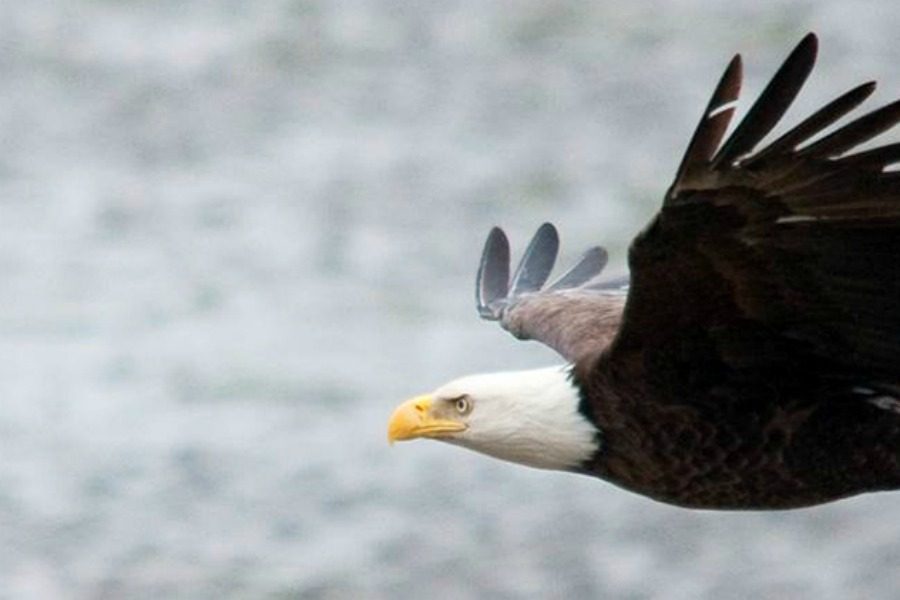Photo Credit: U. S. Fish and Wildlife Service
Amor Terrae: Bald Eagles
Haliaeetus leucocephalus. In case you’re not a burgeoning biology major, that jumble of letters is the Latin name for a bald eagle. In early American history, bald eagles were voted to be the country’s national bird, despite Benjamin Franklin’s disapprobation. Even though Franklin was against the choice, it’s easy to see why the other founding fathers were in favor of it. The eagles are truly majestic-looking raptors, with the female eagles standing 37 inches high at the most — that’s three feet and one inch! Their wingspan is almost twice the size, measuring at least as high as a full-grown man. Under five years of age, the eagles don’t have the full white-and-brown feathering; instead, they have patchy white on brown.
Bald eagles often live near water, and they love fish (though they do have other choices on the menu). In fact, the eagles are in the genus of “Sea Eagles,” or — in Latin — Haliaeetus. However, they limit their range to North America and part of South America. Perhaps it’s fitting that the national bird of the U.S. doesn’t live overseas.
In 1940, bald eagles were protected to save their species from extinction. Human activities (and perhaps other factors), especially the use of pesticides, were killing the eagles off. However, bald eagles have bounced back, and in 2007 they were numerous enough to drop the status of “endangered,” though people are still prohibited from harming them. As far back as 2013, the National Wildlife Refuge System website exclaimed, “In fact, it’s getting rather difficult to keep track of all the eagles in some places!” A recent article from Fox News states that the amount of bald eagles actually has a negative effect on the wildlife population in places.
Back to Benjamin Franklin for a moment – it’s been often said that he was against the bald eagle and in favor of the turkey. The first part of that sentence is true, but it’s not certain that Franklin was actually serious about the choice of the turkey for the national bird of the US. History.com says that “The story that Franklin proposed the turkey as the national symbol began to circulate in American newspapers around the time of the country’s centennial and are based on a January 26, 1784, letter in which he panned the eagle and extolled the virtues of the gobbler to his daughter, Sarah.” So perhaps the bald bagle didn’t have a serious rival in its earth-bound cousin, after all.
~Sts. Francis and Albert, pray for us!~
Be praised, my Lord, through Brothers Wind and Air, and clouds and storms, and all the weather, through which you give your creatures sustenance. ~St. Francis of Assisi

